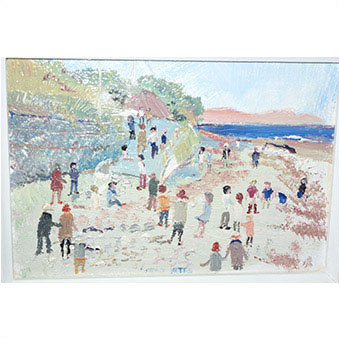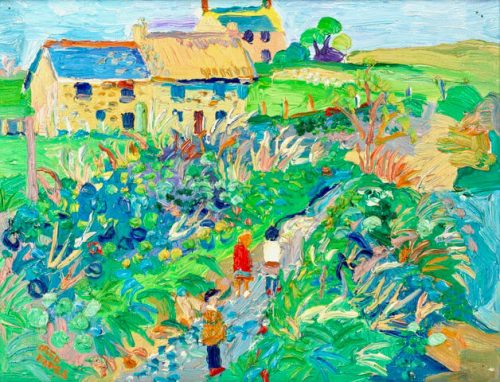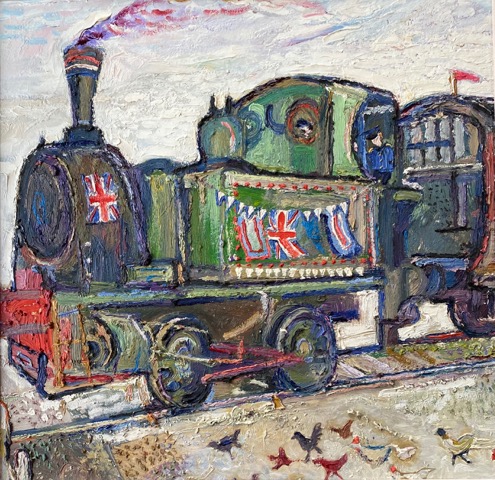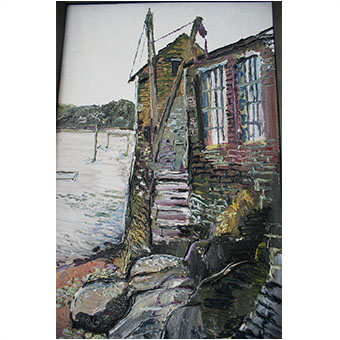Select other Artists:

Frederick Yates
Born in Urmston, Lancashire, Fred began working life as an insurance clerk. During the Second World War he served as a Grenadier Guard. His twin brother was killed at Arnhem in 1944. After the War, Fred took up painting on his return to Manchester and trained to become a teacher.
By 1970, Fred gave up teaching and moved to Cornwall to enable him to devote all his energy to painting. He led a simple life supporting himself with odd-jobbing and selling at the quay-side the occasional painting. He also swapped his artwork for food. During this period, Fred’s commercial success began after the ‘St Ives 1939-64’ exhibition at the Tate Gallery, London. He also had a successful solo exhibition in Geneva.
In the early 1990s, Fred moved to village life in France. Increasingly nomadic, Fred led a Spartan lifestyle entirely driven by his art. He bought several small homes in remote villages with basic amenities where he painted undisturbed. He enjoyed playing his piano, always lived alone and painted his figures for company.
Untutored but with tremendous determination, Fred painted almost exclusively outdoors – mainly of England’s fading industrial scenes, humorous daily street life, sunny working-class sea side holidays and colourful village life. His characters included unmistakable stylised figures such as Victorian aunts with hats and coats, mothers with prams, little dogs and children at play. He battled against artistic sophistication as for him beauty resided in ‘simplicity and a child’s mind’. Fred’s freedom of expression is marked by his application of lush vibrant colours of thick paint often squeezed straight from the tube onto the canvass.
Fred is buried in one of his favourite Cornish spots overlooking St. Michael’s Mount. The Fred Yates Society has been established to assist in preserving and promoting his work. His work has been the subject of published books and articles. His paintings hang in many public, corporate and private collections.
Art works
Lorem Ipsum is simply dummy text of the




